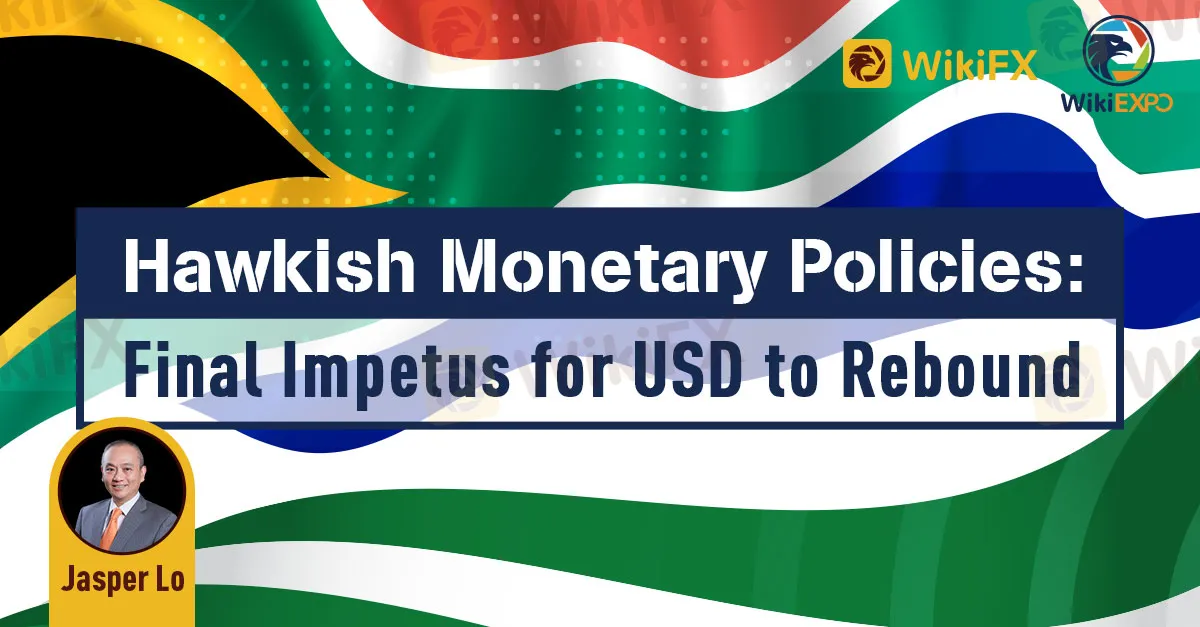简体中文
繁體中文
English
Pусский
日本語
ภาษาไทย
Tiếng Việt
Bahasa Indonesia
Español
हिन्दी
Filippiiniläinen
Français
Deutsch
Português
Türkçe
한국어
العربية
Hawkish Monetary Policies: Final Impetus for USD to Rebound
Abstract:The U.S. Core Consumer Price Index (CPI) in May released last Thursday rose from 3% in April to 3.8% from a year earlier, exceeding 3.4% based on the market expectation. This reveals that the escalating inflation in America is faster than expected.

The U.S. Core Consumer Price Index (CPI) in May released last Thursday rose from 3% in April to 3.8% from a year earlier, exceeding 3.4% based on the market expectation. This reveals that the escalating inflation in America is faster than expected. Although the Biden administration and the Federal Reserve (Fed) have seen the current rise as temporary, the majority of senior analysts from the financial market don‘t share the same view. Instead, they believe that this worsening trend has been irreversible that is possible to be severer even ram into the economic recovery and undermine investors’ confidence in the economic prospect, provided the absence of effective control.
As for the U.S. unemployment rate in May reported early this month, the figure dramatically falls back from 6.1% in April to 5.8%. The rate is expected to be lowered further as the wages recently increased by American enterprises for recruitment have been indicative of the job vacancy created by the local economic recovery. In addition, inflation can be fueled in the U.S. because of the steady growth of oil prices. In this case, USD has been fully equipped to be as strong as it was in the first quarter, which is crucially reliant on the Fed meeting scheduled for this Wednesday. Will Powell embark on tightening monetary policies and signal the delisting, interest-rate hikes in the next year, and the stuff in the announcement after the meeting in a bid to comply with the public opinion and Yellens view?

Should the hawkish monetary policies be implied by Powell, USD will definitely boast conditions to be as strong as it has been before. Yet, it is not only the announcement but bitmaps launched after the meeting that should be paid attention to so that the attitude of the Board of Governors to increasing interest rates can be understood. In my opinion, the upcoming bitmaps are possible to reveal the prone to introducing the hikes in advance. Under this circumstance, USD seems to be supported both before and after the meeting, coupled with the U.S. bond interests rebounding from the trough, thus weakening JPY further. The market seen by the Japanese currency will be hazardous if the Bank of Japan (BOJ) continues its everlasting dovish monetary policies after its meeting this Friday.
Disclaimer:
The views in this article only represent the author's personal views, and do not constitute investment advice on this platform. This platform does not guarantee the accuracy, completeness and timeliness of the information in the article, and will not be liable for any loss caused by the use of or reliance on the information in the article.
Read more

Trading Psychology – 4 Wise Quotes From The Legendary Mark Douglas
In the world of trading, few books have had the impact of Mark Douglas’ big hit Trading in the Zone. Written almost two decades ago, the book has become a must-read for traders looking to elevate their game to legendary status. While there is so much wisdom to be found in the book, we’ve compiled 5 of the best quotes about trading psychology that every trader should read.

EUR/USD Forecast: New lows ahead of the weekend? ECB, covid and technical all point lower.
Optimism has been weighing on the safe-haven dollar – but not against the euro. The common currency's failure to recover is a sign of weakness that could be followed with falls to fresh lows once the mood sours again – and there are reasons to expect that to happen sooner rather than later.

EURJPY WEEKLY FORECAST. Price Likely To Rise Above 131.000.
The price of EURJPY has been on a steady rise ever since it made a low of 128.808. Other currencies collapsed against the Japanese Yen two weeks ago.

AUD Is Weak Under All-rounded Pressure
A rise in the wake of a fall was seen by DXY last week ascribed to the uncertain time of delisting caused by the Federal Reserve (Fed). However, the reason for the rally of DXY last Friday is the vigorous growth of personal consumption expenditures (PCE) released by the U.S. Bureau of Economic Analysis (BEA).
WikiFX Broker
Latest News
Germany's Election: Immigration, Economy & Political Tensions Take Centre Stage
WikiFX Review: Is IVY Markets Reliable?
IG 2025 Most Comprehensive Review
ED Exposed US Warned Crypto Scam ”Bit Connect”
Top Profitable Forex Trading Strategies for New Traders
EXNESS 2025 Most Comprehensive Review
Currency Calculator






